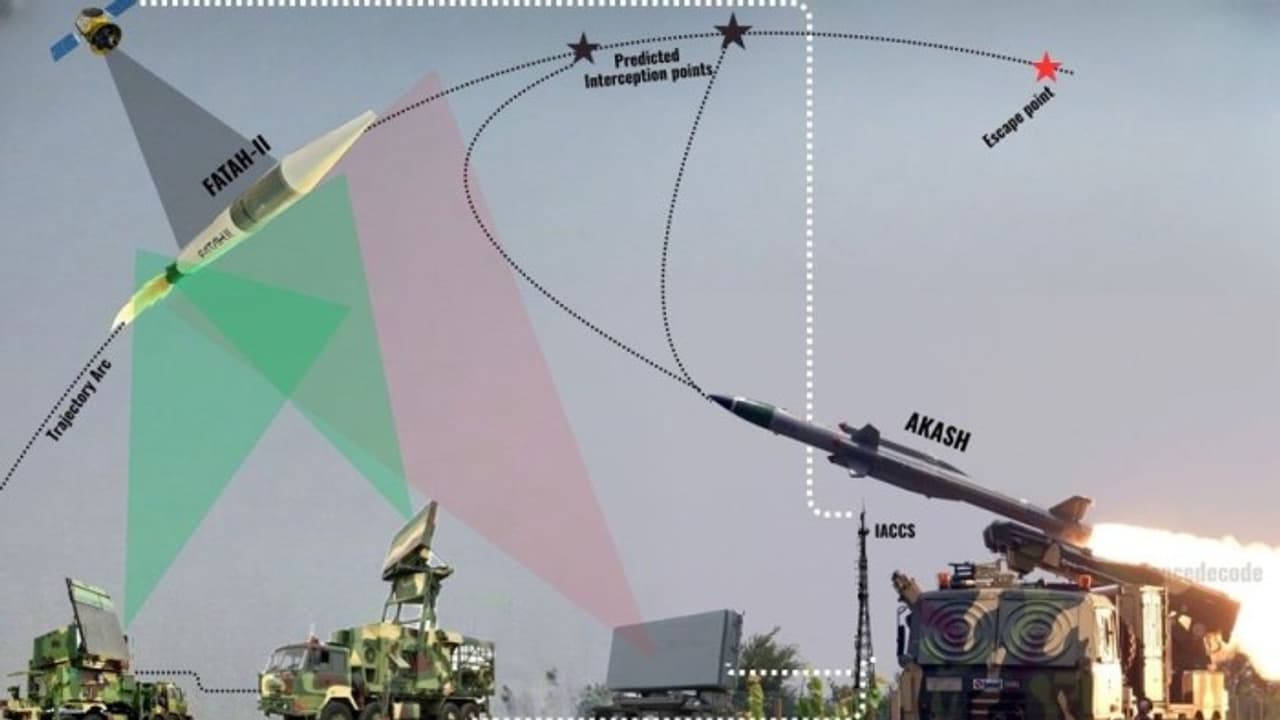India’s Akashteer air defence system and upgraded L-70 guns intercepted every drone and missile during Pakistan’s May 9–10 aerial assault, showcasing India’s shift to automated, indigenous, and highly coordinated air warfare dominance.
In a powerful display of India’s rising defence prowess, the Indian Army showcased the indigenous Akashteer air defence system and upgraded L-70 Air Defence Guns, both of which played a decisive role in intercepting every missile and drone during Pakistan’s deadliest aerial assault on May 9–10.

Speaking to ANI about the upgraded system’s performance, an L-70 Air Defence Gun operator said, “This gun system is very effective... We showed that we also have a system capable of destroying any target. It can track targets from a long distance and lock onto them. As soon as they enter the effective range, firing action is taken.”
He further stated that during the conflict, the L-70 system achieved a 100% success rate in destroying enemy drones. “We destroyed all the drones. Its success rate is 100 per cent,” he said.
The soldier expressed full confidence in the Indian Army’s ability to tackle future aerial threats. “Even in the future, if the enemy country tries to attack us by sending drones, aircraft, or missiles, we will give them a befitting reply. We have the capability to destroy them in the air itself...”
What is Akashteer
India’s invisible shield On the same night, Akashteer, India’s fully indigenous, automated Air Defence Control and Reporting System, was also deployed. It intercepted and neutralised every inbound projectile, proving its capability beyond lab conditions or defence journals. This system has now emerged as the sharp edge of India’s air defence strategy.
In the words of an official statement:
“In the dark skies, a new kind of warrior awakened. It did not roar like a fighter jet or flash like a missile. It listened. It calculated. It struck. This invisible shield, Akashteer, is no longer a concept confined to defence journals. It is the sharp edge of India’s air defence, the unseen wall that stopped a barrage of missiles and drones on the night of May 9th and 10th, when Pakistan launched its deadliest attack on Indian military and civilian areas.”
While Pakistan relied on Chinese-imported HQ-9 and HQ-16 systems, which reportedly failed to detect or intercept Indian strikes, Akashteer’s real-time response underscored India’s dominance in automated air defence warfare.
“What stood between them and their intended targets was not just technology, but years of commitment to Atmanirbhar Bharat,” the statement added. “Akashteer showcased India’s dominance in real-time, automated air defence warfare.”
How Akashteer works
Smart, fast, and indigenous Akashteer is designed for intelligent warfare—not brute force. It provides a real-time, common air picture to all components involved in air defence (control rooms, radar units, and gun positions). This coordination enables quick, accurate tracking and automated neutralisation of enemy aircraft, drones, and missiles.
It integrates a wide range of radar systems and sensors including:
- Tactical Control Radar REPORTER
- 3D Tactical Control Radars
- Low-Level Lightweight Radars
- Akash Weapon System radar
The data gathered from these is processed in real time, allowing automated engagement decisions. Akashteer is a vehicle-based system, making it mobile and effective even in hostile environments.
Unlike older models which relied heavily on manual coordination, Akashteer allows for autonomous low-level airspace monitoring in warzones and efficient control of ground-based air defence weapons.
This marks a clear shift in India’s defence doctrine—from passive protection to proactive, tech-driven retaliation.
Part of India’s growing C4ISR ecosystem Akashteer is a part of India’s broader C4ISR framework—Command, Control, Communications, Computers, Intelligence, Surveillance, and Reconnaissance. Its integration allows the Army, Navy, and Air Force to operate with unmatched synergy in high-stakes environments.
By fusing data, speed, and automation, the Akashteer system has proven it sees, decides, and strikes faster than anything Pakistan fielded during the May 9–10 hostilities.


